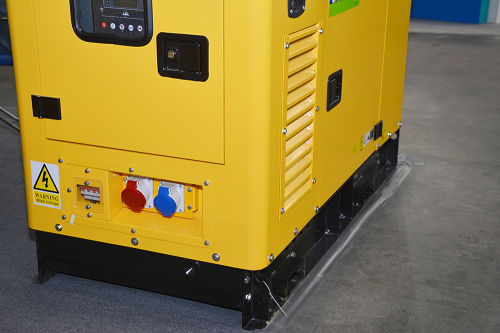Backup generators are a great way to make sure your home has all the electricity, light, and heat it needs in the event of a power outage. Installing one isn’t a simple process which is why we recommend having a professional do it.
Understanding the steps that go into a backup generator installation can help you decide if it’s a job you want to try and take on yourself.
Step #1: Get Comparison Quotes

Not all backup generators are created equal, and neither are the people who install them! You can spend several hours or more online comparing models and reading reviews. Or you can talk to an experienced electrician who will provide you with an upfront quote on the equipment and installation costs. They’ll also be able to provide you with the proper sizing and application of your new generator.
Step #2: Obtain Permits
Sonoma County requires that you obtain a permit for the electrical and plumbing work that goes into a backup generator installation. You may also need a second permit for the structure the generator is housed in or on. You can contact your local municipality yourself to determine if you need a permit. If you hire a professional installer they’ll secure any necessary permits for you. If you plan to do it yourself, allow up to a week to get the paperwork processed.
Step #3: Select an Installation Location
When it comes to backup generator installation, safety always comes first! That means you can’t just plop a generator down anywhere you have some extra space. Local ordinances must be also obeyed. A professional installer can help explain the proper placement of your equipment.
Step #4: Prepare the Surface
Backup generators often require a concrete pad to keep them up and away from mud and dirt. Some people use pea gravel, but it isn’t usually the best solution. Gravel may shift and because its weight isn’t evenly distributed, the generator itself may eventually settle unevenly and you’ll need to re-level it. A concrete pad offers a stable, clean, and safe platform for your generator.
Step #5: Backup Generator Delivery
Whole-house backup generators are heavy! Whether you’re installing it yourself or having a professional do it for you, proper placement is important. If you’re handling installation yourself, you’ll want to fully inspect the unit before accepting delivery. If there’s damage, take pictures and refuse delivery.
Step #6: Backup Generator Installation
Once you’ve made price comparisons, obtained the necessary permits, picked out a location, prepared the pad, and taken delivery of the equipment, you’re ready for installation. Be sure you have all the tools you need to accomplish tasks like installing an electrical sub-panel, redirecting critical circuits, running a new natural gas line, pulling electrical cable, and making gas and electrical connections to the generator.
Backup Generator Installation: Should You Hire a Professional?
Whole house backup generators are available in a range of sizes and can be quite complicated to install. That’s why we rarely, if ever, recommend our customers do a backup generator installation on their own.
When you hire a professional electrician to install your backup generator, you can rest easy knowing the work is done in compliance with local, state, and national codes.
Ready to hire a professional for backup generator installation in your Sonoma or Marin County area home? Spyrka Electric can help you choose the right unit, prepare the installation site, place the generator, run fuel lines, and make all necessary electrical connections. To learn more, contact us by phone, email, or online. We’re here to meet all your backup generator needs!

